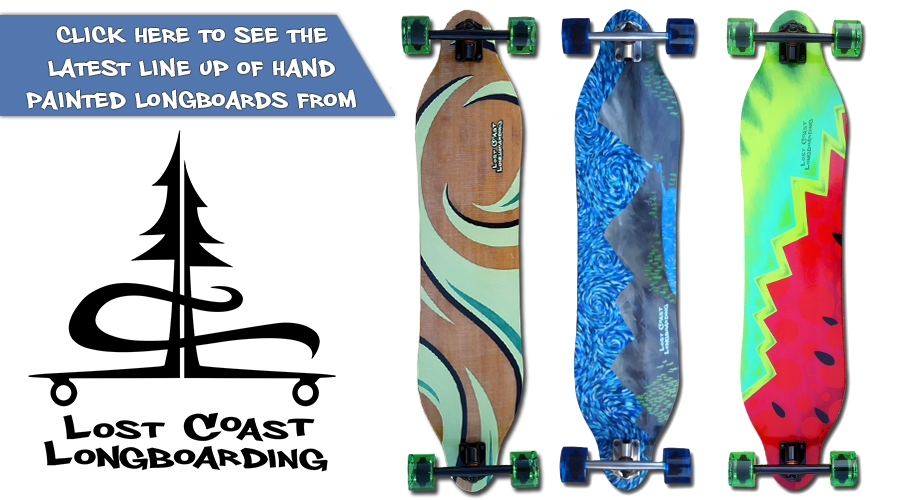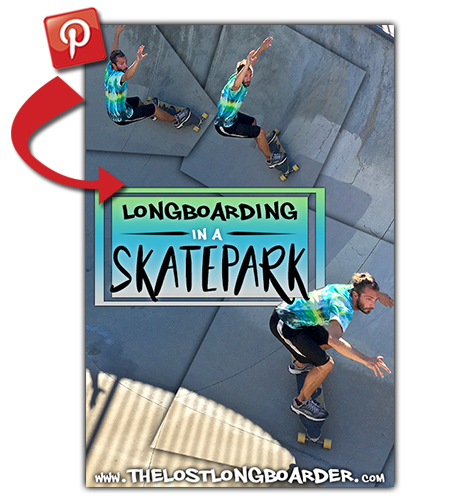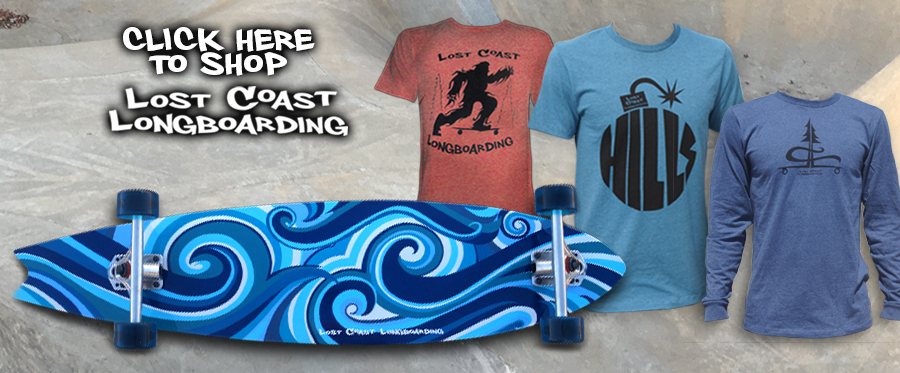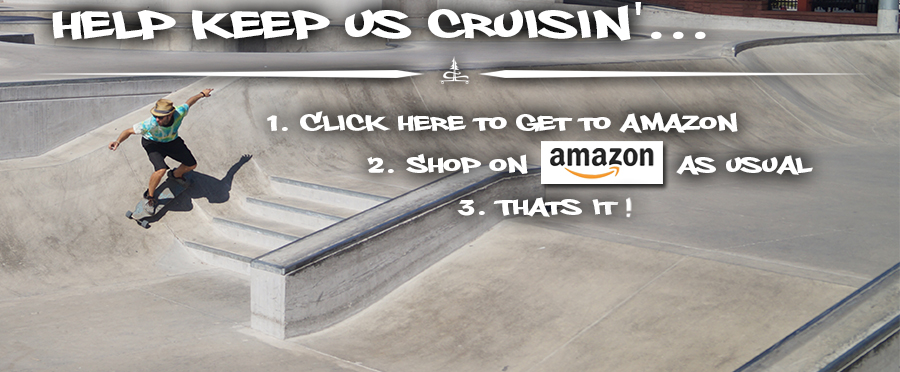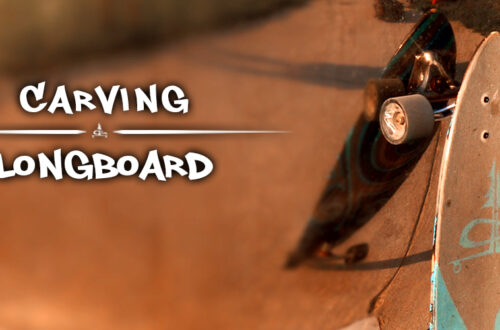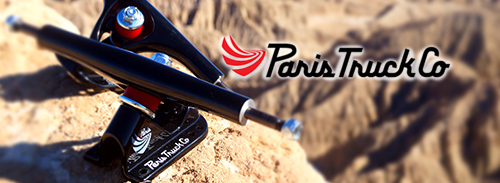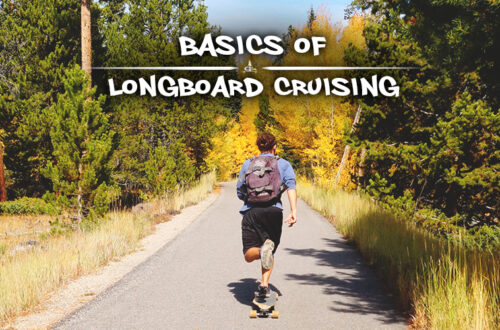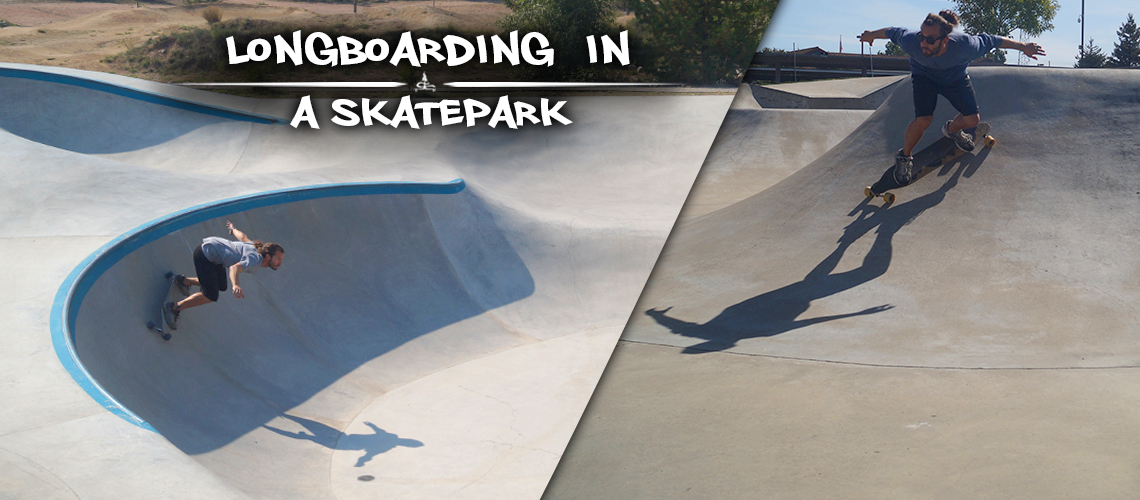
Longboarding In A Skatepark
When someone says longboarding, people usually think of some mellow carving around the neighborhood, cruising a boardwalk or bombing steep hills. But most people don’t think about longboarding in a skatepark. And when you’re riding a longboard at a skatepark, most people are really surprised. Todays engineering has taken modern skateparks to a whole new level. Many of todays skateparks are created on a very large scale and now incorporate many smooth transitions and banked turns that are great for longboarding in a skatepark. The sensations given to a rider in these environments feels very much like surfing, hence the nickname “cement surfing”.
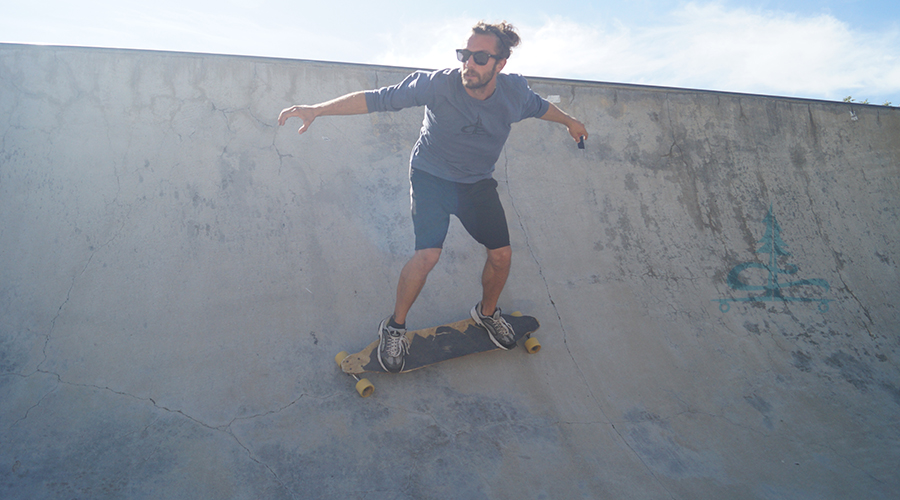
Longboarding in a skatepark is a lot of fun! And each skatepark creates a new experience as you explore the layout, check out the features and develop lines between transitions and obstacles. Find out more about the riding style, longboard features and skatepark features that enhance the longboarding in a skatepark experience!
Use these links to jump around the article!
- What is Longboarding in a Skatepark
- Best Longboard for Longboarding in a Skatepark
- Best Skateparks for Longboarding – Features to Look For
- Worst Skateparks for Longboarding – Features to Avoid
- How to Longboard in A Skatepark
- Our Favorite Skateparks for Longboarding
- Safety While Longboarding in A Skatepark
- Skatepark Etiquette
What is Longboarding in a Skatepark
Longboarding in a skatepark is exactly what the name implies – riding a longboard in a skatepark. While longboarding in a skatepark a rider tends to use the parks features to build and maintain fast speed by using body weight, momentum, and pumping to cruise around all corners of the skatepark. The banked turns and vert sections in most modern skateparks allow riders to carry their momentum high on the walls and keep a fast speed through the entire skatepark.
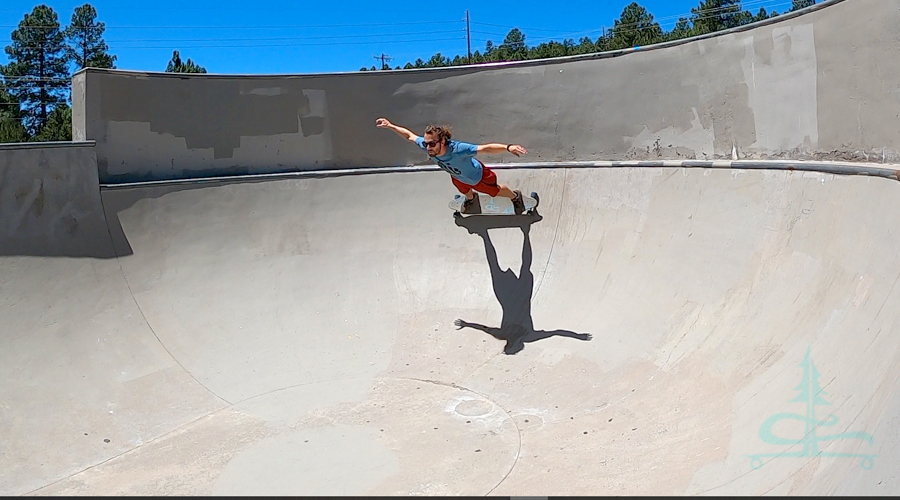
Best Longboard for Longboarding in a Skatepark
Choosing which longboard to ride in the skatepark can strongly affect an athletes ride. Longboards are longer than the traditional skateboards that are usually seen in a skatepark. This can be an issue because many skateparks have ramps and other obstacles that often cause a longboard to “bottom out.” This is when the middle of the longboard deck scrapes the cement of the skatepark obstacles, usually on an angled ramp. Because of this, many people think that longboards do not belong in the skatepark, but if you know what you’re doing then you won’t have to worry.
Longboard Features for Skatepark Riding
There are many important features to choose from when deciding on a longboard. Some important features of a longboard that will make it a good candidate for the skatepark include: flex, tail, rails, bumpers, risers, and wheels.
From my personal experience and years of riding longboards in skateparks all over the country, I think this longboard shape from Lost Coast Longboarding is a great longboard for riding a longboard in a skatepark.
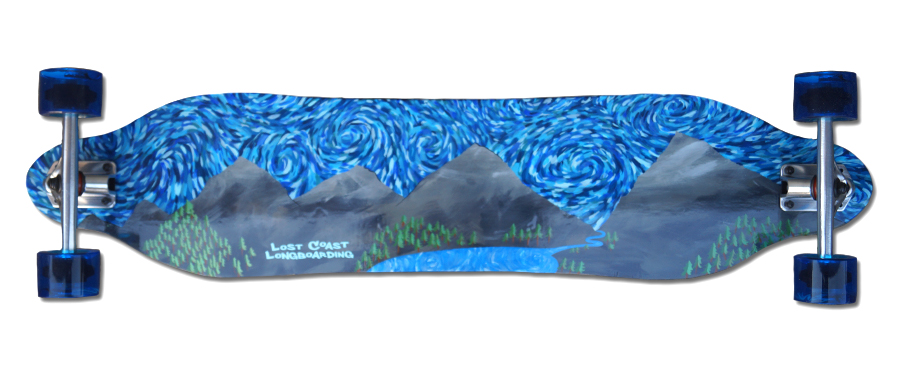
This longboard has many features that make it ideal for longboarding in a skatepark. The board is flexible, the shape provides great foot placement, there is no difference between the front and the back, and the soft wheels provide a very smooth ride.
Longboarding Flexibility
Flexibility is an important longboard feature that riders should take into account when choosing a longboard to ride in a skatepark. This is important because a longboard that flexes can help a rider easily build and maintain speed. The flexibility helps by assisting a rider to pump through turns and pump over smooth transitions. Flexibility in a longboard can also help a rider because a flexible board is more likely to twist a little. Twisting a skateboard seems a little weird. But this is helpful in a skatepark because a longboard is so long that the trucks and wheels may be on two different angles at the same time. The twist in the longboard can help riders when transitioning from a flat surface to a vertical surface.
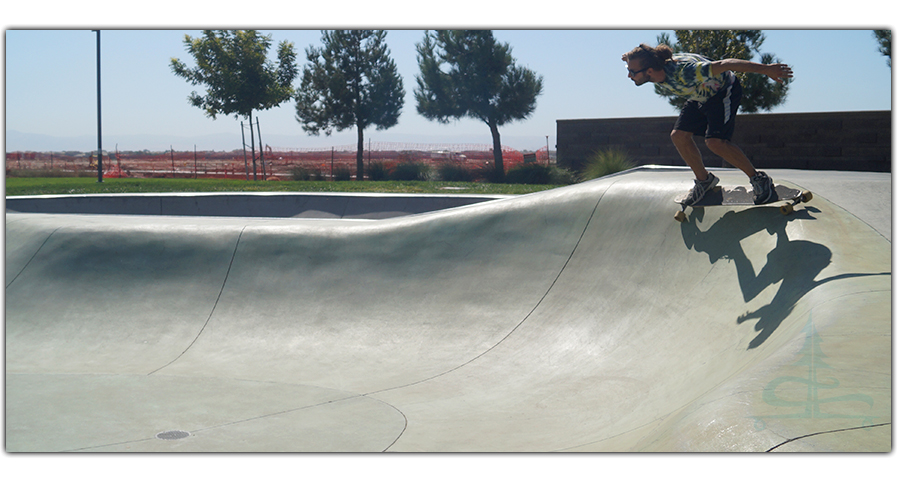
Kicktails
A traditional skateboard has two kicktails, one on each end of the deck. Having a kicktail on a skateboard is essential to dropping in and it also helps riders turn sharply. Many longboard shapes do have kicktails, but oftentimes the kicktail is only in the back. This gives the longboard a distinct difference between the front and back of the board. Which means the longboard is designed to go in one direction… forward. This will not prevent anyone from riding the longboard backwards, but it will make it trickier.
When boarding in a skatepark riders may often find themselves riding up a ramp or wall and then riding back down in the other direction. When this happens, it is nice to have a longboard that does not differentiate the back from the front. This is why I prefer a longboard shape that does not have a tail (nor a front or back of the board). If you are trying to drop in, you would need a tail.. but dropping in with a longboard is extremely difficult and not recommended because of this.
Rails and Bumpers
Rails and bumpers are not really features, but accessories. These add some strength and defense to your longboard. The skatepark can be a harsh environment for a crash or wipeout. Many times the rider walks away fine, but the board may smash into a cement wall and become damaged. Rubber bumpers along the front and back of the longboard can definitely absorb some of this impact – protecting the longboard from damage. Since longboards are longer than traditional skateboards they often bottom out at the skatepark. Having rails on your longboard will help prevent damage to the underside when the board bottoms out. Having these rails will also help preserve the artwork on the bottom of your hand painted longboard from Lost Coast Longboarding.
Risers
Risers are little pieces of rubber or plastic that go between the trucks and the longboard deck. These accessories are a good way to add some height to your longboard. Having a taller longboard means that you have more ground clearance. This makes it so you are less likely to scrape the bottom along ramps and other obstacles. They are also helpful by absorbing some shock and making a smoother ride.
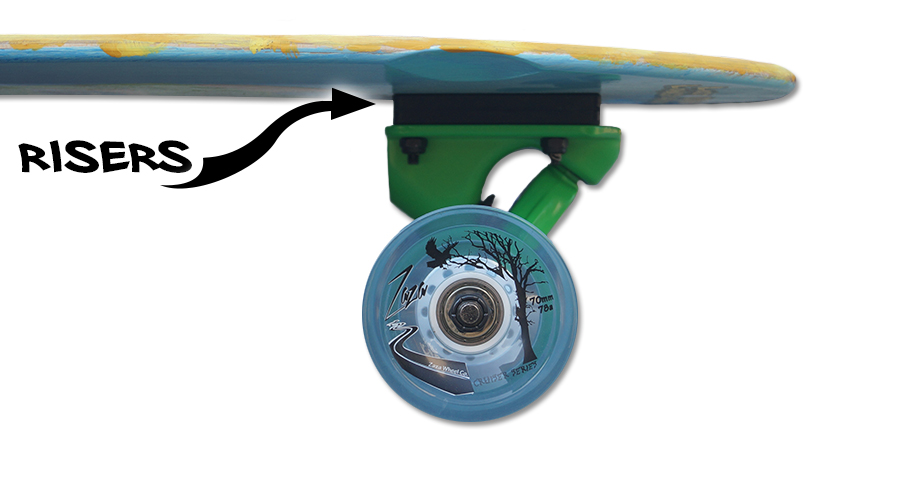
Longboard Wheels
The wheels that you choose for your longboard are also important. Softer and bigger wheels will give you a smoother ride, but may slip if the surface of the skatepark is slick or dusty. Harder wheels are often smaller, making them quick in the skatepark but will also exaggerate the bumps, cracks, and rocks.
Liking this Article? Pin it!
Best Skateparks for Longboarding – Features to Look For
There are so many skateparks all over the county and they come in many different shapes and sizes with a variety of features. There are two main styles of skateparks: street and vert. Street skateparks usually have many obstacles such as boxes, rails, and stairs. Vert skateparks have usually have tall walls, banked turns and smooth transitions. Many skateparks incorporate a little of both of these styles. When riding a longboard in a skatepark, you’re going to want a vert style skatepark with smooth transitions.
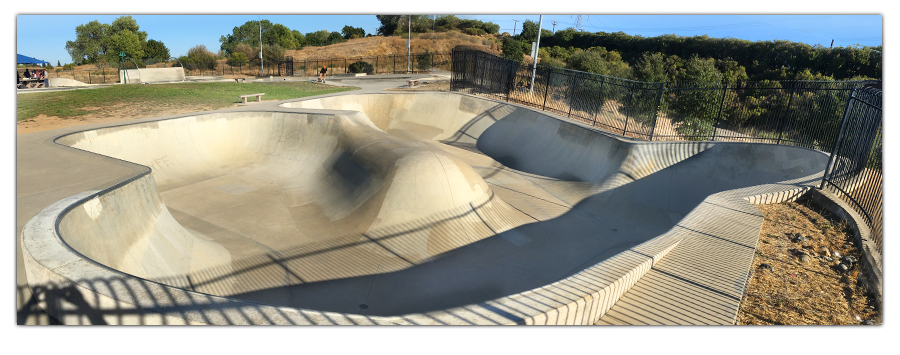
Smooth Transitions
What are transitions? Transitions are the change between the floor and the wall (or the obstacle). These transitions can be a sharp angle between the ramp and the ground or they can be smooth and rounded.
When riding a longboard in a skatepark smooth transitions are your best friend. It’s these smooth transitions that give riders the feeling of surfing on the cement. These smooth transitions have a key role in providing riders with the ability to pump through banked turns and build speed. Many skateparks have continuous areas with smooth transitions, often called a snake run. A snake run is usually windy with smooth transitions between the floor and the wall. As you skate back and forth, the turns also have smooth transitions and are called banked turns.
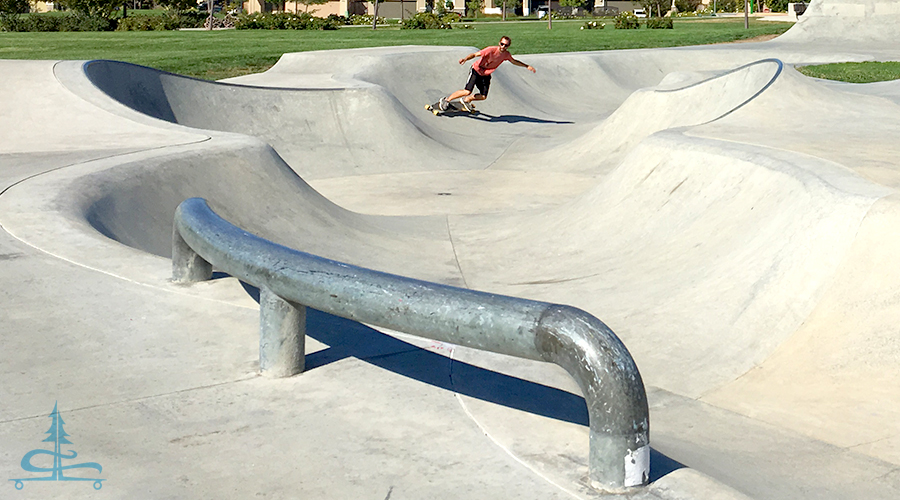
Banked Turns
Smooth transitions throughout the skatepark or in a bowl allow riders to take turns at an angle. Riding the banked turns at an angle allows riders to take these turns fast and get up on the wall. Using the wall as you turn while riding a longboard in a skatepark is critical for building and maintaining speed. In order for a rider to take a banked turn, the rider must be going fast so their momentum will keep them on the wall.
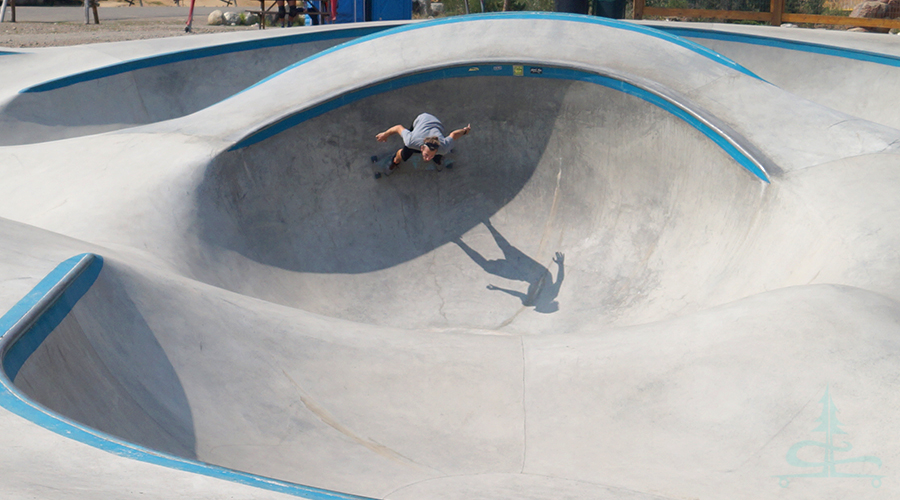
A rider taking multiple banked turns in a row can really use their momentum to build and maintain speed by using their body weight and pumping through the turns.
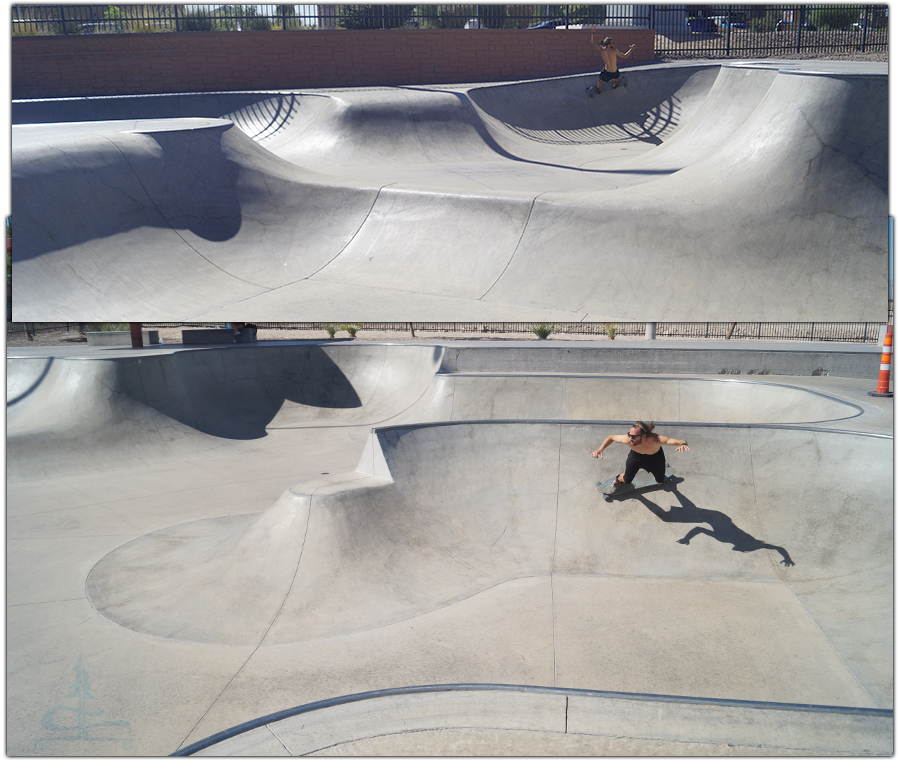
Roll Ins
Not all skateparks are well equipped with smooth transitions. You’ll often notice coping (the metal or cement) around the edges of a skatepark wall or bowl. This is used by traditional skateboarders to drop in or grind. Dropping in and grinding are not usually done with a longboard, so coping is usually avoided. Taking a longboard over coping can be done, but it can be very hard.
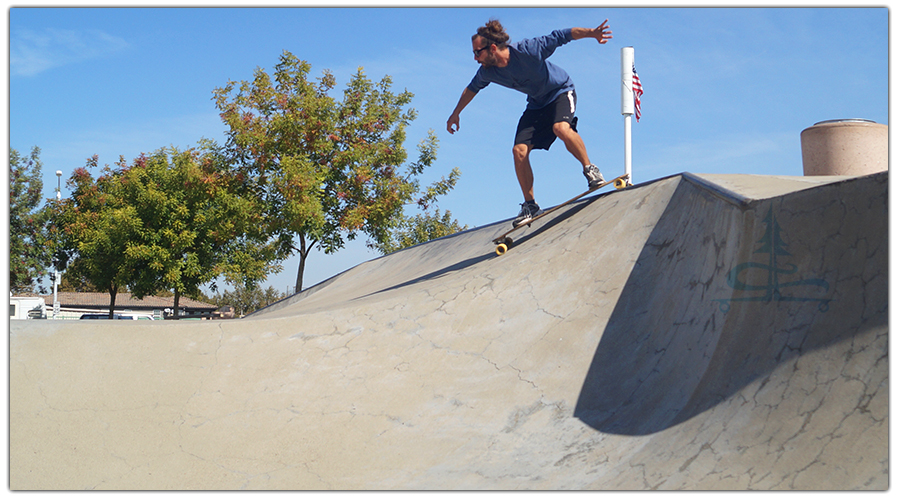
Instead of dropping in via coping, riders on longboards should look for roll ins. A roll in is a smooth transition that allows a rider to drop vertically down a wall. These roll in areas are very important features when riding a longboard in a skatepark. Since many bowls or vert sections require riders to be going fast these roll in areas help longboarders drop steeply down and gain speed very quickly without bottoming out or having to drop in.
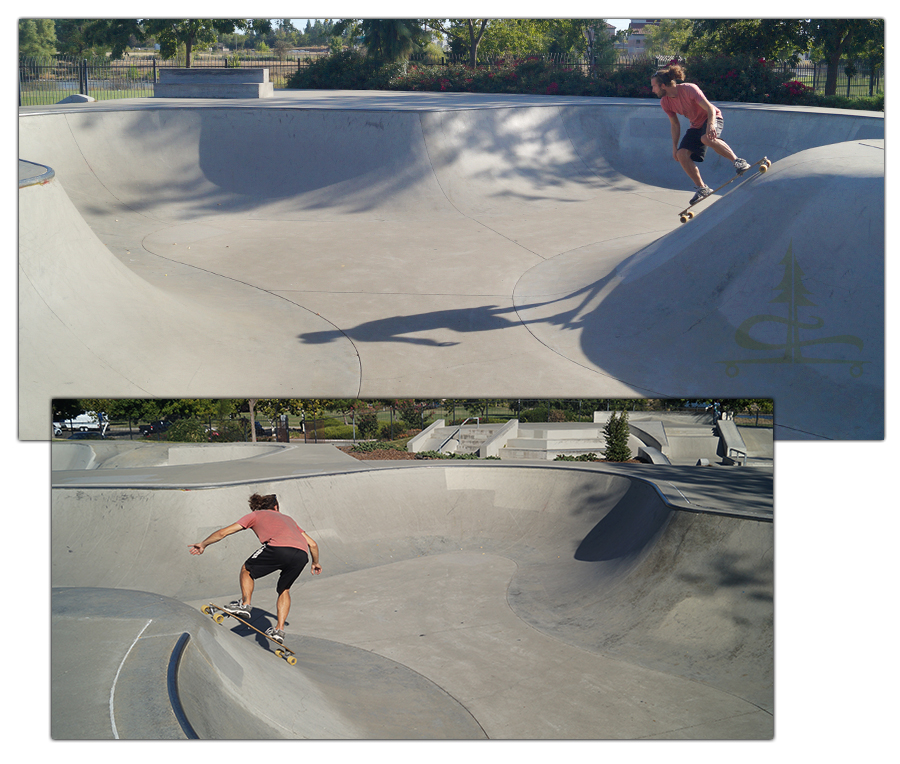
Rounded Features and Obstacles
Smooth transitions can also be incorporated into the obstacles throughout the park. For example, humps or boobs are rounded little hill features. These are great obstacles for longboarders because they can really help maintain speed through a flat section of the skatepark. Features such as these humps can really help add to the flow of a skatepark.
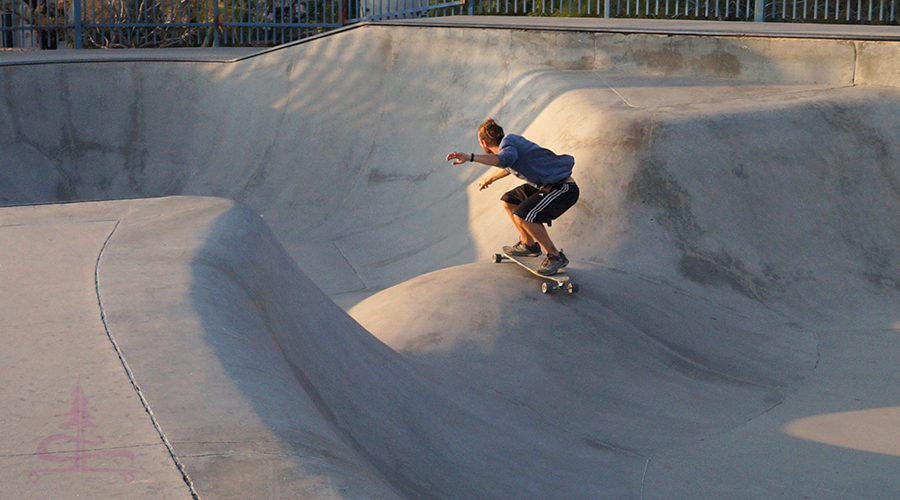
Flow
The flow of a skatepark is another very important feature for riding a longboard in a skatepark. Flow can be described as the ability to continuously ride in a skatepark without having to stop. A skatepark with good flow often has many banked turns that a rider can choose to take in either direction and easily link to other turns or obstacles without having to stop.
The flow of a skatepark can be purposely manipulated in its engineering stages. For instance, an obstacle placed in a way that causes riders to react in a certain way or head in a different direction can help manage the flow of traffic. How well a skatepark flows really depends on the flow of traffic.
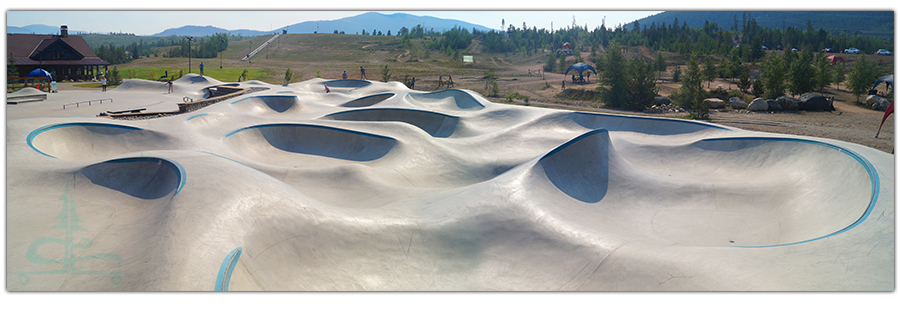
All of these features that make a skatepark good for longboarding can also be found in pump tracks. (Click here to see our article about longboarding in a pump track).
Worst Skateparks for Longboarding – Features to Avoid
Sharp angles and rough transitions are features to avoid when riding a longboard in a skatepark. Rough transitions can be where a flat ramp meets the ground causing a disruption in the riders flow. If the transition is not rounded or smooth then it can really throw riders off their board. Another feature to avoid when longboarding in a skatepark are steep angles on flat ramps. The steep angles are usually where longboards bottom out at the skatepark. This can really disrupt a riders concentration and focus. If the angle is sharp enough, the bottom of the longboard will slide across or scrape on the cement. This can often be controlled by experienced riders, but it also has the ability to cause riders to fall or have to bail. Flat skateparks with ramps and street obstacles are not usually very fun on a longboard.
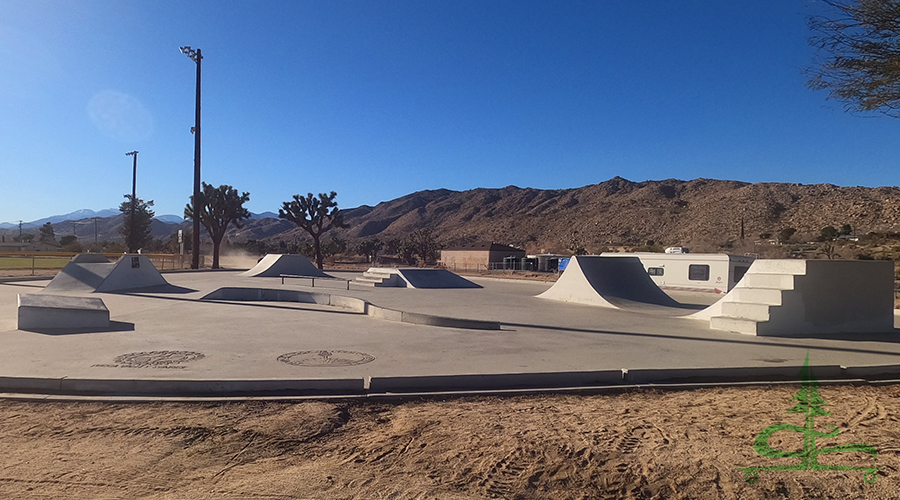
How to Longboard in a Skatepark (riding style)
When learning to ride a longboard in the skatepark, it is important to start with the basics. Be sure you can comfortably stand on a longboard and cruise around on a flat surface before you jump into riding at the skatepark.
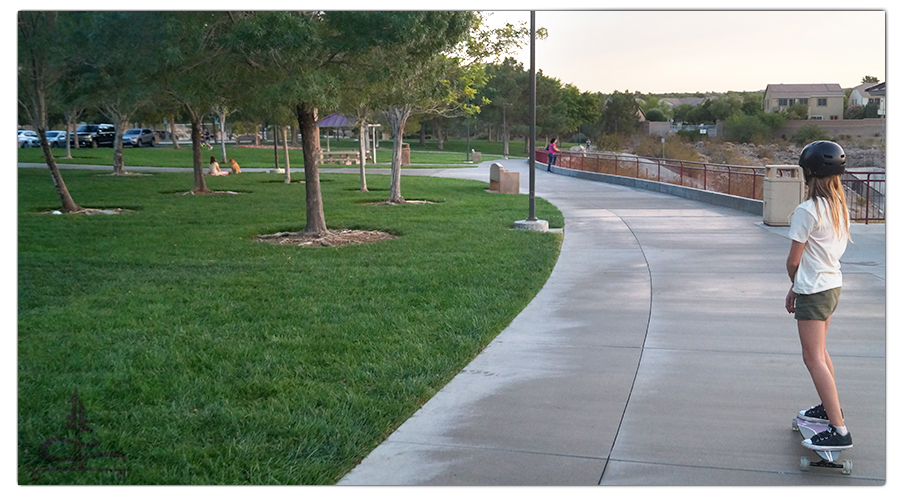
When you first visit a new skatepark it is a good idea to cruise around the park and get an understanding of the layout and where the obstacles are. It is very important for everyone to be aware of other riders. Sometimes you have experienced pros zipping around the skatepark, but most of the time there will be a variety of riders with different skill levels. Or sometimes there are just a million scooter kids constantly getting in your way. No matter who is there, be respectful and aware of others to avoid collisions and injuries.
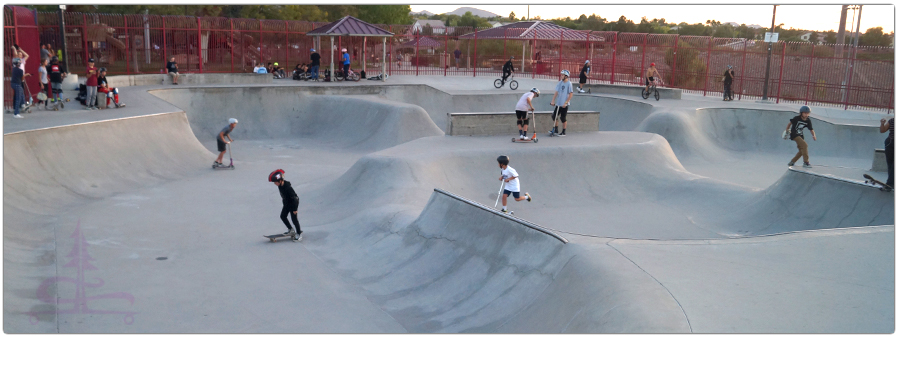
Using the Features
Once you are warmed up, loosened up, and ready to catch a cement wave you can start looking for your lines. When learning how to longboarding a skatepark its important to look for mellow banked turns so you can get used to riding on the walls instead of the floor. It is good to start with small turns, but you will learn that taking banked turns is actually much easier if you’re going fast. Once you are comfortable on small banked turns, you can gradually try to get higher on the walls which will slowly build confidence in your riding abilities.
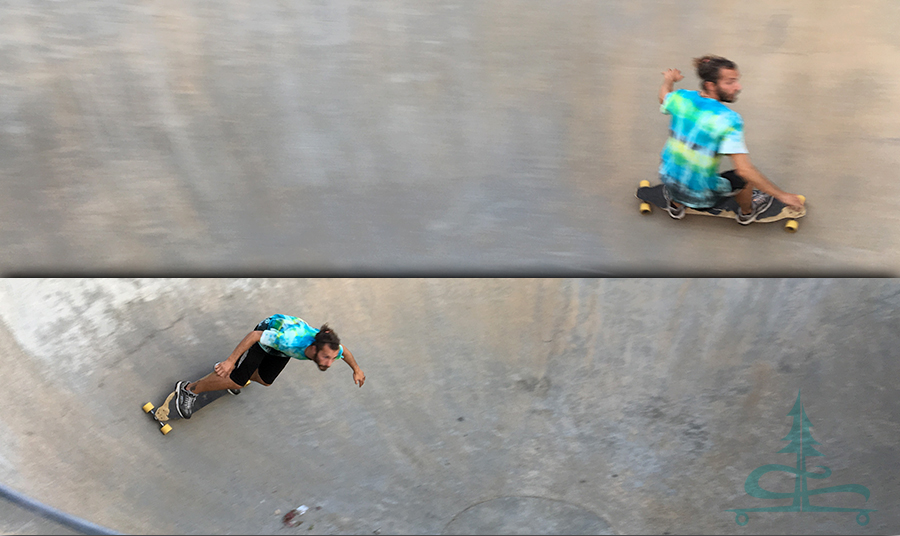
When you start, you’ll want to look for ramps or roll in areas that will begin your line with good speed. Remember, roll ins and smooth transitions are very important. In order to maintain a good speed you will either need to start with a steep roll in or you will have to build up your speed by pumping through turns and over humps. Maintaining a good speed is important because your momentum will carry you horizontally through the banked turns.
When cruising around, try to get high on the walls to carry your momentum on to the next obstacle. When confronted with a sharp banked turn it is often best to stay high on the wall before the turn, and descend towards the ground through the turn.
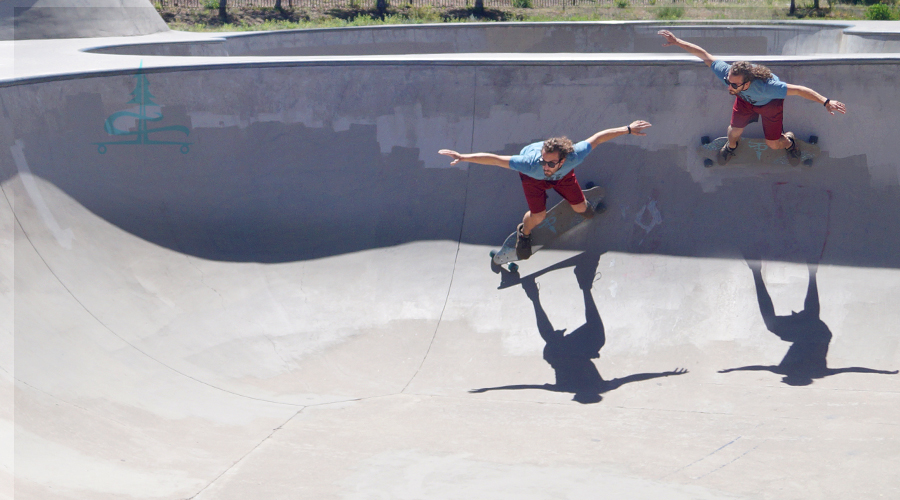
Our Favorite Skateparks for Longboarding
As you know by now, some skateparks are better than others for longboarding in. Check out the list of our favorite skateparks below to get an idea of what a skatepark that’s good for longboarding looks like. You’ll notice that they all have similar features – banked turns, roll ins, and smooth transitions. And they’re all a lot of fun!
- Volcom Brothers Skatepark in Mammoth Lakes
- Curt Pernice Skatepark in Ripon
- Anthem Skatepark in Henderson
- Craig Ranch Skatepark in Las Vegas
- Frisco Skatepark
- Granite Skatepark in Sacramento
- Mobash Skatepark in Missoula
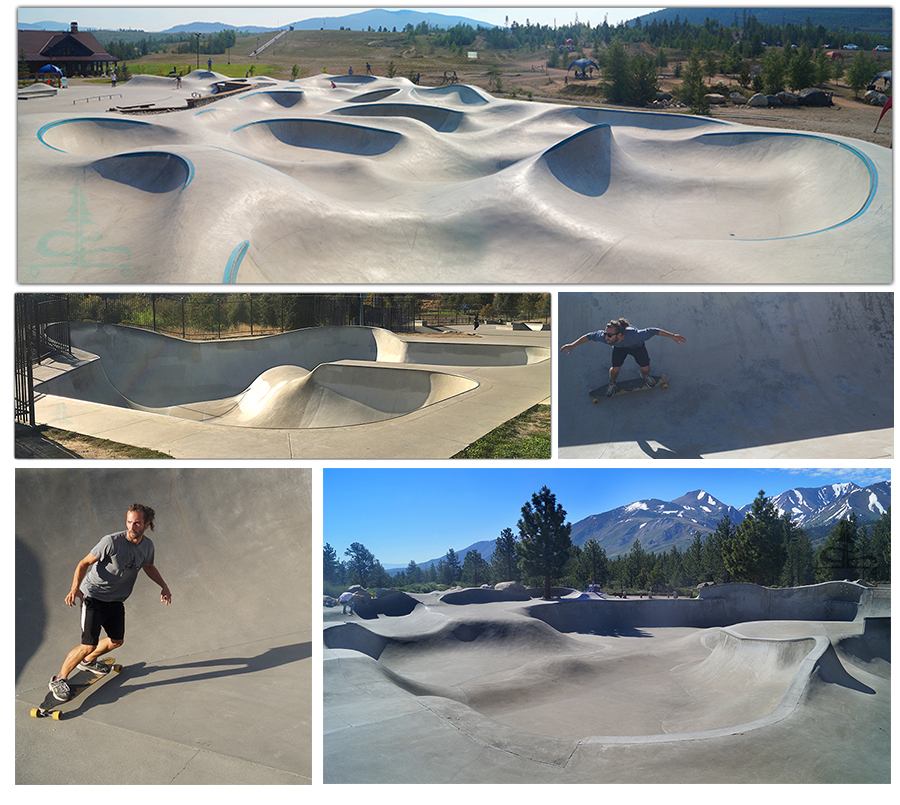
Safety While Longboarding in a Skatepark
Crashing at the skatepark will happen to everyone. When it comes to falling, the best advice I can give is: DO NOT catch yourself with your hands out. This is how you break your wrist/hands/arms. Instead try to roll when you hit the ground. Rolling helps to disperse the impact through your body. Falling on cement hurts and can leave you badly injured so it’s important to be safe, especially when you are uncomfortable. When you are learning it is best to be padded up! This gives you more than safety, it also gives you confidence. If it does not hurt to fall down then trying new things can be more fun. How does one make falling on cement not hurt? Wear a helmet, knee pads, elbow pads, and wrist guards.
Liking this Article? Pin it!
Etiquette While Longboarding in A Skatepark
Every skatepark is different. Some skateparks are really relaxed and chill with a supportive environment, and some can be competitive and riders can have attitudes. No matter where you are be respectful of others and always be aware of other riders! Look where you are going, look where other people are going, and don’t expect anyone to see you. Communication with the other riders is also important, learn how other people act at the skatepark. Sometimes there will be an unwritten rule about announcing your drop into a bowl, or other local etiquette. It is also important to take turns. Skateparks are usually at public parks and people go there to have fun so be kind to others and others will be kind to you.
Thanks for Reading Our Longboarding in a Skatepark Article!
I really enjoy longboarding in a skatepark! And hopefully this article gave you an idea of what to look for and what to expect when you decide to catch that cement wave too! The best way to learn is by doing. Don’t be afraid to try something new, don’t be scared if you don’t know what’s going to happen, EXPECT to fall down and be prepared, that’s how you learn.
If you have a tip that we didn’t mention, have further questions or comments, let us know in the comment section below!
We live on the road full time and love checking out skateparks and new hiking opportunities! And to sustain our lifestyle we create hand painted longboards as well as design and screen print our own shirts. To see our latest lineup of hand crafted longboards and apparel head over to our Lost Coast Longboarding Shop! Or you can contact us to order your own custom longboard.
And if you’d like to show support for The Lost Longboarder, please use our Amazon link to get to Amazon whenever you do any online shopping. It won’t affect your shopping experience but it’ll help us out a bit!


